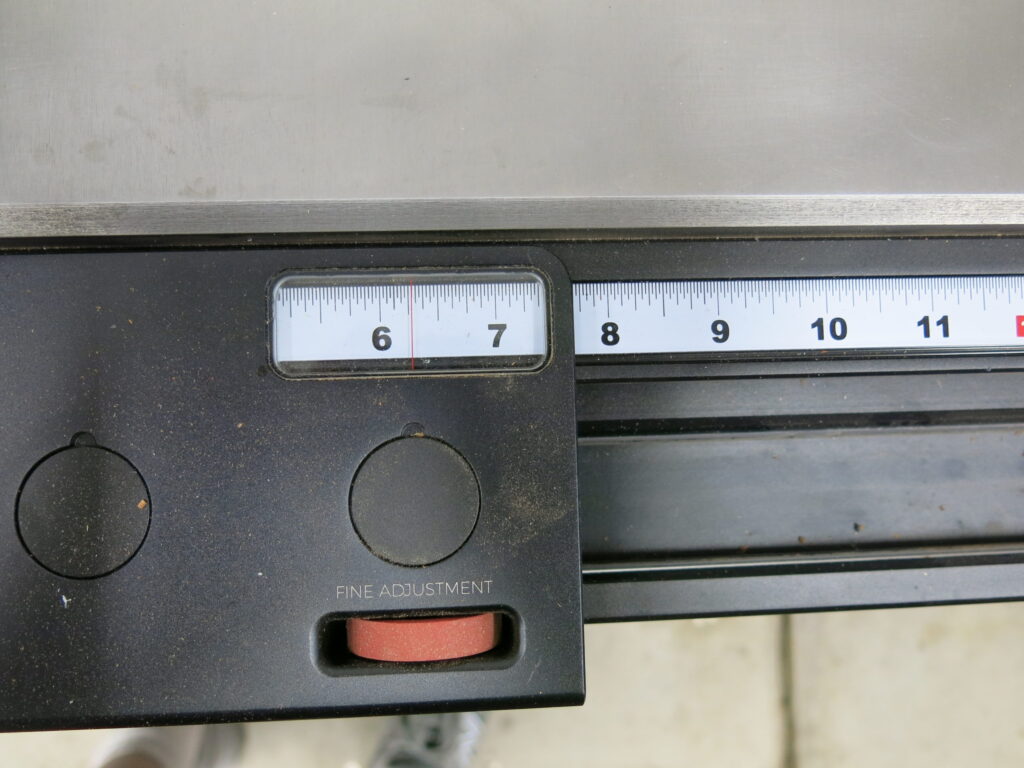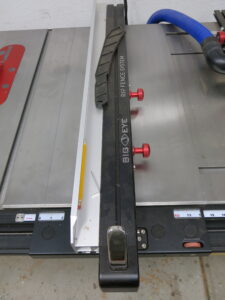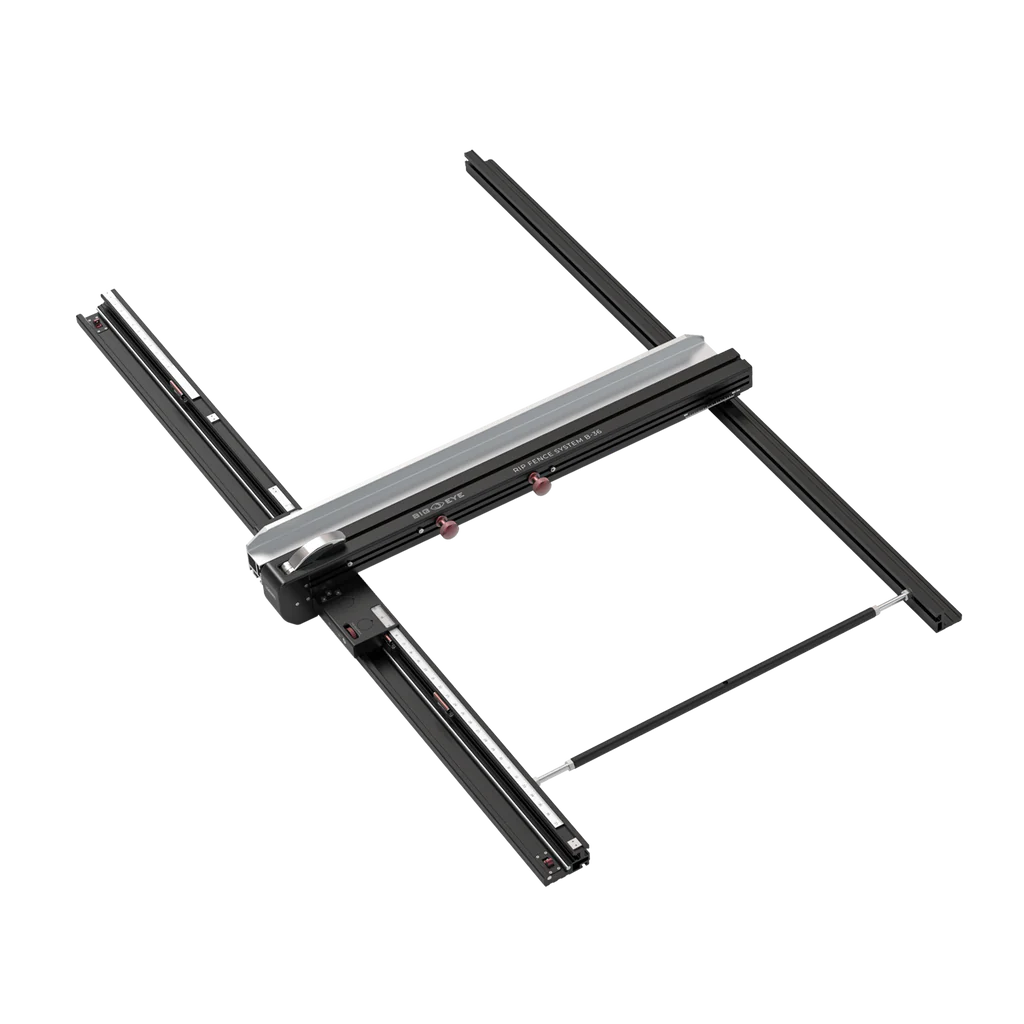When I bought my Harvey Woodworking table saw, it came with a very serviceable fence that was very accurate and waaaay better than my Porter Cable contractor saw (RIP). But, we can always do better, can’t we? Read on and learn from my very expensive lesson on personal improvement.
I have a love hate relationship with Harvey. On the one hand, they make some really nice equipment, including my saw. On the other hand, their customer service leaves much to be desired. As with all things Harvey, the price of the Big Eye fluctuates almost daily. After stalking the price for weeks, I pulled the trigger BUT…I didn’t do enough research on the specs; I bought the B-52 which is the long version of the fence cuz I gots the long version of the table saw at 67 inches. Right? Wrong. Turns out the 52 in “B-52” is actually my IQ.
When it arrived, I deliriously started installation and found that the rails were way too long for my tablesaw/router table combo and started the process with Harvey to get the shorter rails, thinking this would be an easy fix since they are really, just over the hill in CA. Not to be. Best they could do was 25% off the full price for just the rails not including shipping and they wouldn’t take the long rails back. I wound up buying a full B-36 Big Eye for about $20 more than their offer and put the B-52 up for sale. Eventually, I sold it for about half of what I paid. So…I have the world’s most expensive Harvey B-36 Big Eye fence which is…fantastic! Is it worth what it cost me? No. Is it worth what you’d pay? Yes, it is. Here’s why:
First, it’s incredibly well made, as are most Harvey tools, and just like the others, the instructions suck. Fortunately, enough people have installed these on various saws to help me (and you) work though the process. YouTube is your friend here.
Second, watch those install videos again and know that the Big Eye adjust-ability is also a negative aspect. If you’re one to “skip ahead” because you’re too cool to read instructions, it will take you longer to get it right. I promise you. One of the best ways to start the Big Eye setup is with a Woodpeckers table saw alignment gauge. If you start with getting the table aligned with the blade, the Big Eye fence will follow. Trust me on this. If you chose to start with “close enough”, buy snacks, drinks, and maybe dinner for the shop; you’ll be a while.

The most frustrating part of the install was getting the height of the front rail level across the run of the table. Harvey could have made a small height block to make this easy but alas…not. The instructions are for metric measurements, so adjust your plan of attack accordingly. I used a Jessem gauge to mark height at both ends, and then slowly snugged up the rail across the width of the saw. You can use a small adjustable “T” square as well. Do not use a tape measure or your neighbor’s combo square from Harbor Freight! Pay attention to the “Guide Rail Mounting Hardware” eccentric bolts to ensure you’re not doing this over and over.

The biggest thing with the Big Eye (yuk yuk) is that once the rails are installed, the fence is almost 90 degrees to the blade at both ends without adjustment. But, dialing the fence in was a labor of love. On the original fence, I found the process used by Rick (“The Shack”) of YouTube fame to be the most accurate and easiest to repeat. Same process for the Big Eye, except for the head alignment. Generally the adjustment screws are easy to access with an assortment of hex wrenches. Take your time here and don’t accept less than perfection.

Once calibrated, I did a few cuts and was hugely impressed by the smoothness of the fence. It’s just glides on the rails front and back. Over the last year I’ve cleaned the rails maybe four times and it still runs like new. Also impressive is the thumb wheel “micro adjustment”. Gone are the days of rapping my knuckles to nudge the fence over. Once on measurement, the locking mechanism doesn’t move the fence when locking down, unlike a traditional fence. Even my Harvey moved a fraction of a hair at lock-down but not the Big Eye. I’ve moved the scale a few times for different blades but it’s relatively simple and makes quick work of similar cuts; change the blade, change the scale, and it’s off to the races.

I installed this with the “high” side of the fence and set my specs to that thinking I’d eventually use the low side. Never did, probably never will. Over the year I’ve had this, I ‘ve re-calibrated maybe twice and that’s because of some bad cuts. Turned out it was the blade and motor belt, not the fence. Getting accurate and repeatable cuts is now never a problem. If you have a quality saw and need a better fence, I think this one should be your first choice. Or your second choice if just want to spend a lot of money.
